Samsung Galaxy S10 5G Review
The Galaxy S10 5G is real, it’s here, and if you’re willing to part with $1,299, you can have blistering 5G speeds in the palm of your hand at this very moment. After years of wireless carriers telling us what 5G is and promising that the new 5G networks were just around the corner, it’s hard to believe they’re finally starting to deliver.
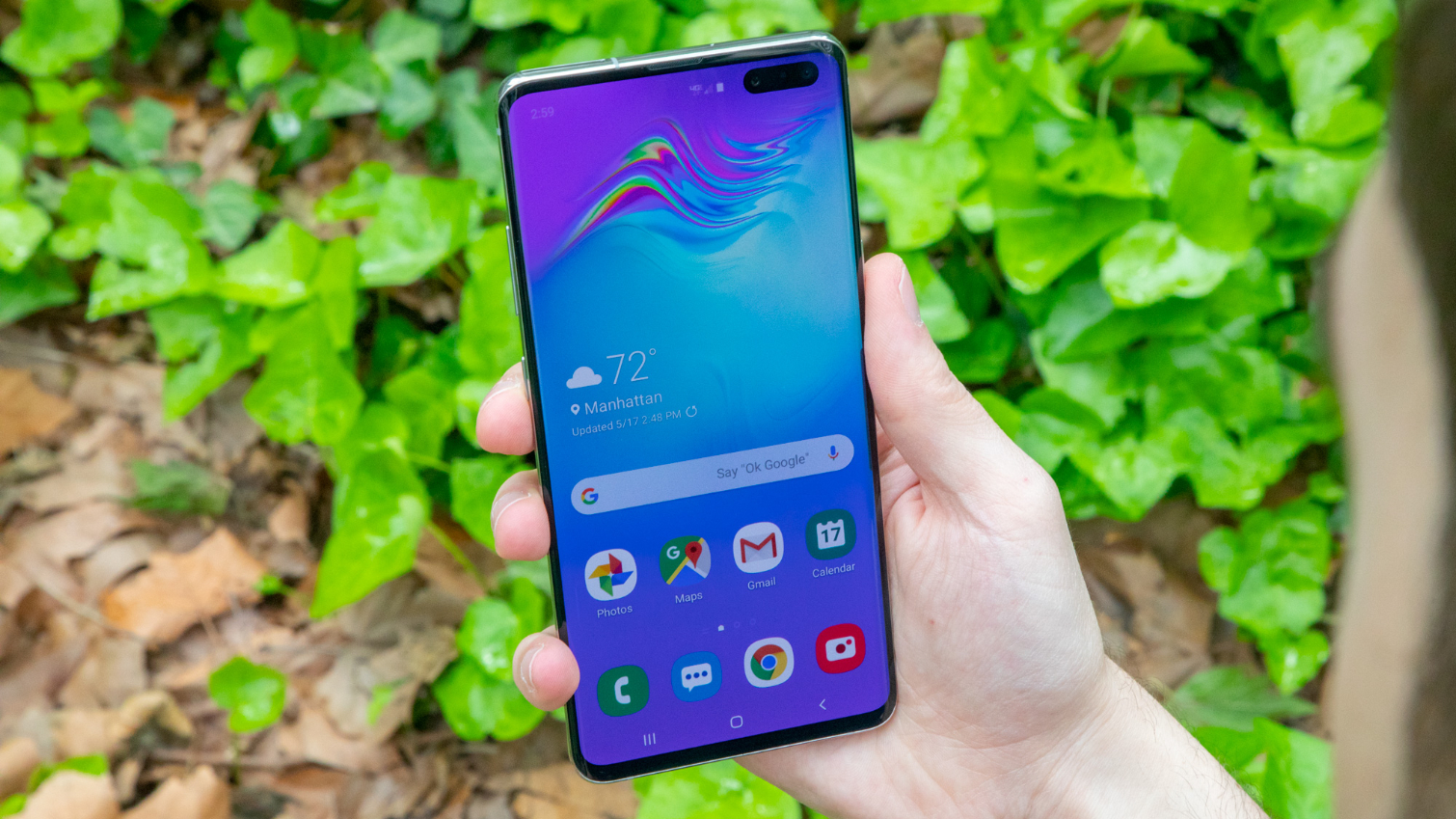
The S10 5G will dazzle you with data speeds you could only dream of. But when you’re not connected to 5G — which will be most of the time at this point — Samsung’s first 5G handset is a Galaxy S10+ with a couple of extra perks.
Even when you're on 4G, you'll appreciate the Galaxy S10 5G's massive 6.7-inch display, which dwarfs the 6.4-inch Galaxy S10+. You also get a time of flight (ToF) sensor on the rear that enables more convincing portraits. Unfortunately, however, between the phone’s high price and 5G clearly being a work in progress, now isn’t quite the right time to buy the S10 5G.
Galaxy S10 5G Cheat Sheet
Why you can trust Tom's Guide
- The Galaxy S10 5G launched on Verizon’s 5G network, which is currently available in 18 cities, with a target of hitting 0 cities by the end of the year. AT&T added the phone on in June, but only for corporate customers. Also in June, Sprint added the phone to its 5G network, and the S10 5G also works on T-Mobile's millimeter wave-based 5G network in six cities. (The phone is not compatible with T-Mobile's newly launched nationwide 5G offering, though.(
- On Verizon’s 5G network in Chicago, the phone averaged just shy of 700 Mbps, and peaked at just under 1.1 Gbps in our testing this spring.
- The S10 5G has the same processor and three of the same cameras as the Galaxy S10 and S10 Plus, but adds depth-sensing, time-of-flight sensors on the front and back.
- The 6.7-inch OLED display is very immersive, but it makes for a large phone that's best for two-handed use.
Galaxy S10 5G Price and Availability
The Galaxy S10 5G starts at $1,299 at Verizon; you can buy it today and use it on Verizon’s 5G Ultra Wideband network. Right now, that network is live in parts of 18 cities, and you’ll only really be able to get a 5G signal outdoors. Verizon will light up its 5G services in more than 30 other cities before the end of 2019.
AT&T sells the Galaxy S10 5G , too, though you'll need to be a corporate customer on the carrier's Business Unlimited Preferred plan if you want to buy Samsung's phone. AT&T sells the 256GB version of the phone for $1,000 — cheaper than what Verizon's charging.
Sprint also added the Galaxy S10 5G in June, and it charges the same $1,299 as Verizon if you pay off the device in full. But you can also get the phone on an 18-month lease, with a reduced $30-a-month payment. You'll also find the Galaxy S10 5G at T-Mobile, though the Uncarrier only offers millimeter wave-based 5G coverage in six cities (Atlanta, Cleveland, Dallas, Las Vegas, Los Angeles and New York.) If you want to take advantage of T-Mobile's nationwide 5G network, which reaches 5,000 cities and covers 2 million people, you'll need to get either a Galaxy Note 10 Plus 5G or a OnePlus 7T Pro 5G McLaren — the Galaxy S10 5G doesn't work on that network.
Should you use the S10 5G on Verizon’s towers, you’ll need a specific data plan from Verizon to reap those superfast speeds. Three of the carrier's unlimited plans — Play More, Do More and Get More — are currently waiving the $10 monthly fee Verizon charges for 5G access. Those are also Verizon's most expensive monthly plans, at $80 to $90 a month. You can opt for Verizon's $70-a-month unlimited plan, but you'll have to pay that extra $10 for 5G.
Sprint isn't charging anything extra for its 5G service, though you do have to get the company's most expensive unlimited plan, the $80-a-month Unlimited Premium option. T-Mobile includes 5G coverage in its $70 Magenta unlimited plan.
The S10 5G comes in two colors — iridescent Crown Silver and Majestic Black — as well as with either 256GB or 512GB of onboard storage. The latter configuration costs an extra $100, and it’s important to note that the S10 5G is the only handset in the Galaxy S10 line that does not have a microSD slot to expand storage, so you’ll have to choose your capacity wisely.
Samsung Galaxy S10 5G Specs
| Price | $1,299, $1,399 |
| OS | Android 9 Pie with OneUI |
| Screen Size (Resolution) | 6.7-inch Dynamic AMOLED (3040 x 1440) |
| CPU | Qualcomm Snapdragon 855 (U.S.) / Samsung Exynos 9820 (WW) |
| RAM | 8GB |
| Storage | 256GB, 512GB |
| Expandable Storage | No |
| Rear Camera | Four: 12-MP wide angle (ƒ/1.5-2.4); 16-MP ultra wide angle (ƒ/2.2); 12-MP telephoto (ƒ/2.4); time-of-flight depth sensor |
| Front Camera | Dual: 10 MP (ƒ/1.9); time-of-flight depth sensor |
| Battery Size | 4,500 mAh |
| Battery Life (Hrs:Mins) | 10:56 |
| Water Resistance | Yes; IP68 |
| Size | 6.40 x 3.04 x 0.31 inches |
| Weight | 6.98 ounces |
Design: The S10, but bigger
Spanning 6.7 inches diagonally, the Galaxy S10 5G makes nearly every other phone I’ve ever held in my hand feel small. That’s a pretty impressive feat, what with sizes creeping up in recent years from all comers in the industry.

Truth be told, though, Samsung’s big and brash flagship weighs about a third of an ounce less than Apple’s 6.5-inch iPhone XS Max, and measures the same in terms of width and thickness. Ultimately, those with small hands or pockets are going to want to hold out for a more compact 5G phone, but the S10 5G isn’t quite as unwieldy as it might seem on paper.
Strangely though, the default scale of Samsung’s OneUI flaunts oversized icons and big text, even on this massive display. You might need that on a device with a really tiny screen, but on the S10 5G, the scale almost resembles one of those jumbo remote controls sold in As Seen On TV stores. Why wouldn’t you want to use that ginormous, gorgeous AMOLED panel to present more than four columns of apps?

Odd scaling decisions aside, the S10 5G literally looks and feels like a Galaxy S10 Plus, but larger, with some extra cameras on the front and back. The Infinity-O display returns here, with a wider cutout for the 10-megapixel primary camera and RGB depth sensor, though the screen is so large, there’s still ample room for the status bar. Once again, an ultrasonic fingerprint sensor has been built into the Gorilla Glass 6 panel, and it works reasonably well here — though it’s not as snappy as some less-secure optical solutions, and certainly can’t contend with the immediacy of a capacitive module.
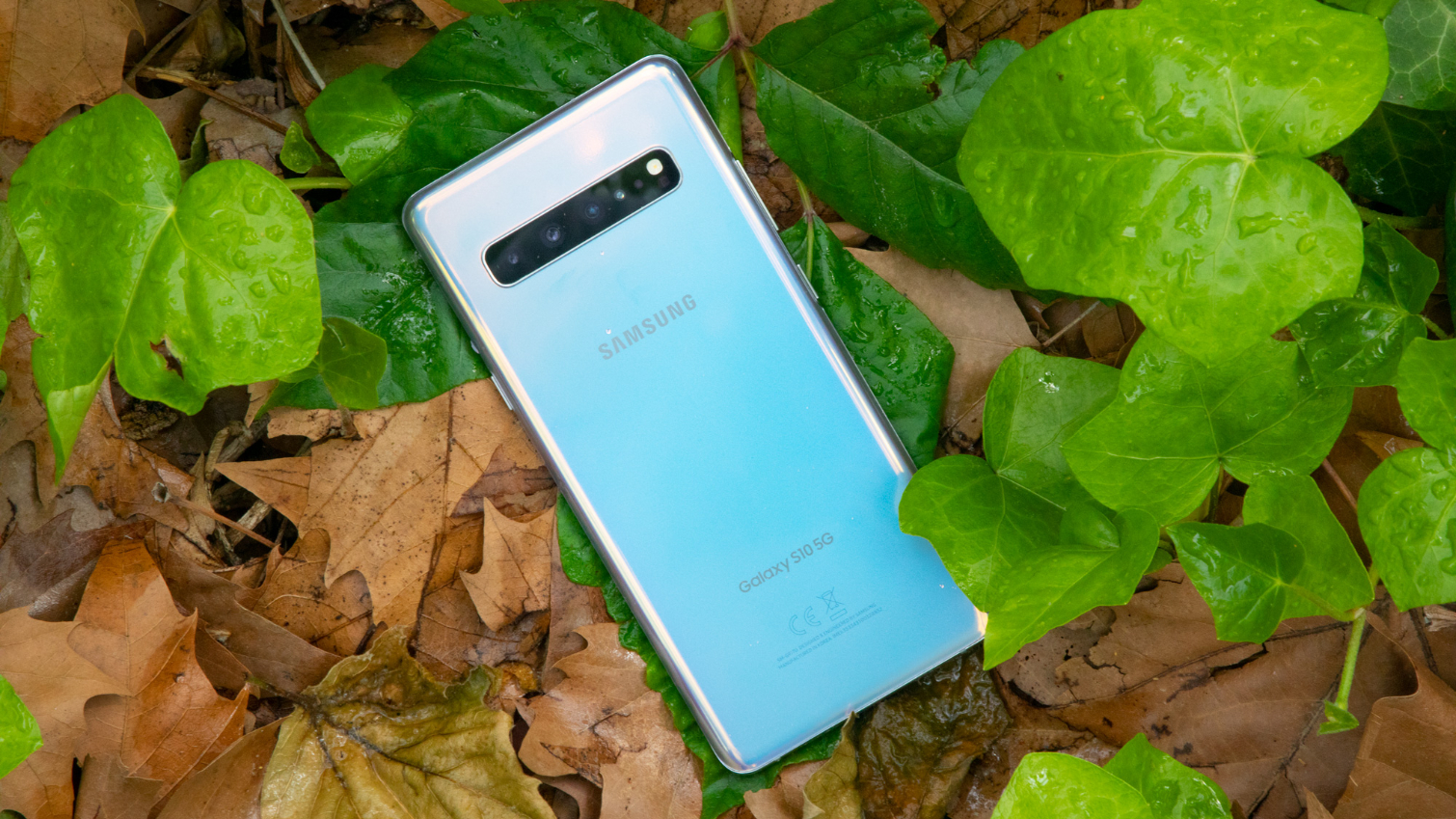
If there’s one aspect of the S10 5G’s design that has impressed me, it would have to be the way our Crown Silver model shimmered in different lighting conditions. It’s not terribly dissimilar from the Pearl White colorway other S10 models are sold in, but the 5G model’s color has a bit more of a sandy, metallic sheen that looks absolutely stunning in sunlight. It’s the hue I’d spring for, for sure.
Display: Bold and bright
The S10 5G’s Dynamic AMOLED display dazzles with vivid colors and the kind of razor sharpness you’d expect from a $1,299 phone. This 6.7-inch panel packs a resolution just north of Quad HD, delivering one of the crispest viewing experiences you can enjoy today on a mobile device.
The screen will get pretty bright, too. At a peak of 528 nits, the S10 5G falls almost exactly 100 nits short of the 625 nits the 6.4-inch S10 Plus achieved, though it’s still good enough for comfortable outdoor use. Color accuracy also wasn’t quite on par with what we observed from the S10 Plus, as the S10 5G delivered a Delta-E score of 0.9 compared to the slightly smaller model’s 0.29 result. (Numbers closer to 0 are better.)
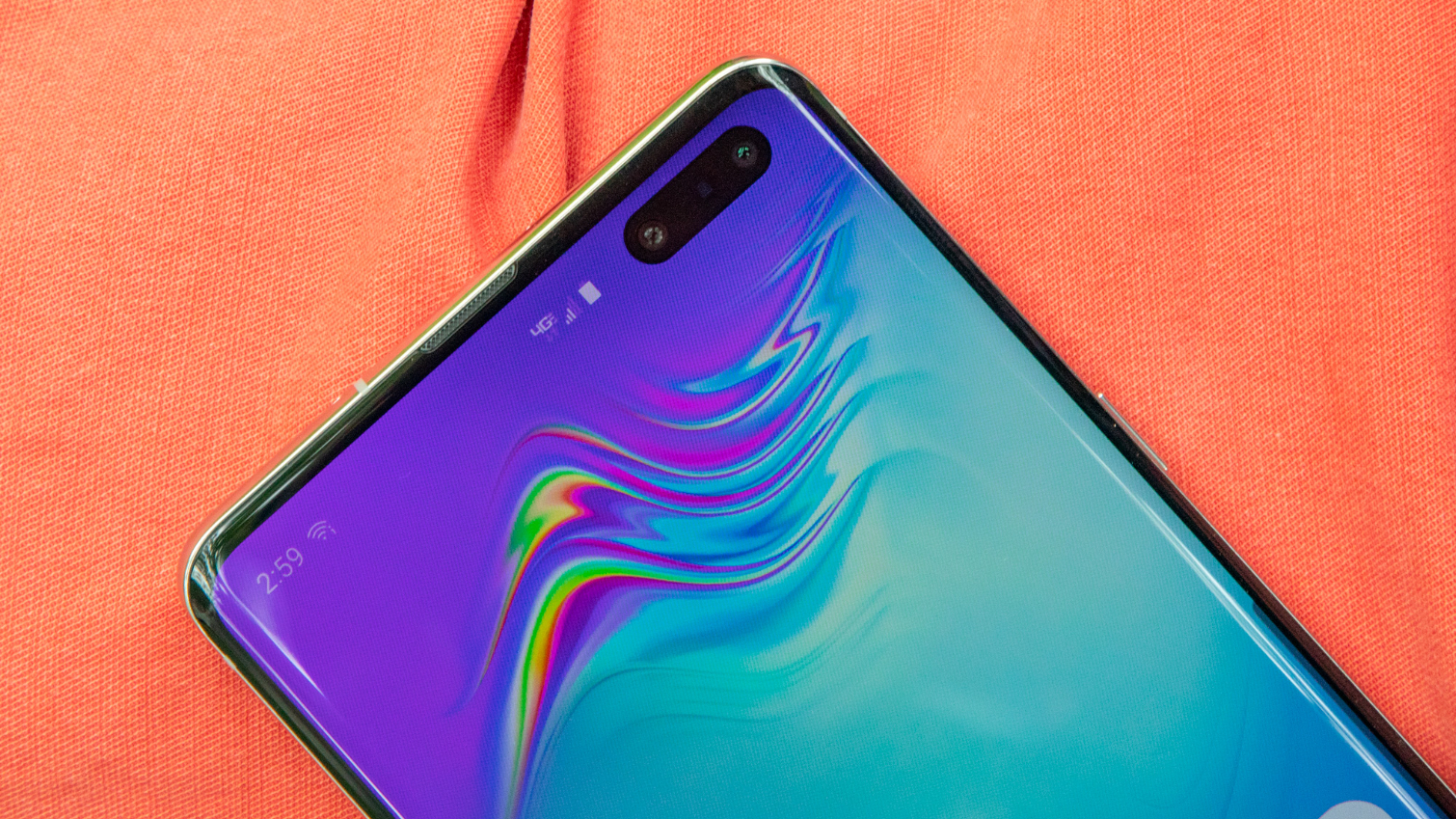
Neither display trait turns out to be an especially significant setback, though. When you’re holding the S10 5G in front of you, it looks plainly brilliant. While watching the trailer for John Wick 3 on the phone, I was captivated by a fight scene inside a moodily-lit bar. The Dynamic AMOLED panel deftly painted everything — from the deepest shadows in the room, to the intensity of the neon fixtures. The streaks of light across Keanu Reeves’ face were rendered with striking clarity and contrast.
Although it could be brighter, the S10 5G’s display still looks plainly brilliant.
If I were nitpicking, I’d have liked a 90Hz display in the S10 5G, similar to that of the OnePlus 7 Pro. There’s nothing quite like the smoothness you get from a fast refresh rate, and personally I really hope such panels will be the next great innovative trend in premium smartphone design. But such an addition might have hampered the S10 5G’s battery life, which is already under duress from those power-hungry 5G radios — so I can live without it.
Cameras: Samsung’s best
You’ll find a grand total of four cameras on the back of the S10 5G. Three of them — the 12-megapixel primary shooter, 16-MP wide-angle and 12-MP telephoto — are carried over from the S10 Plus. However, the 5G version throws a fourth lens into the mix: a time-of-flight (ToF) depth sensor.
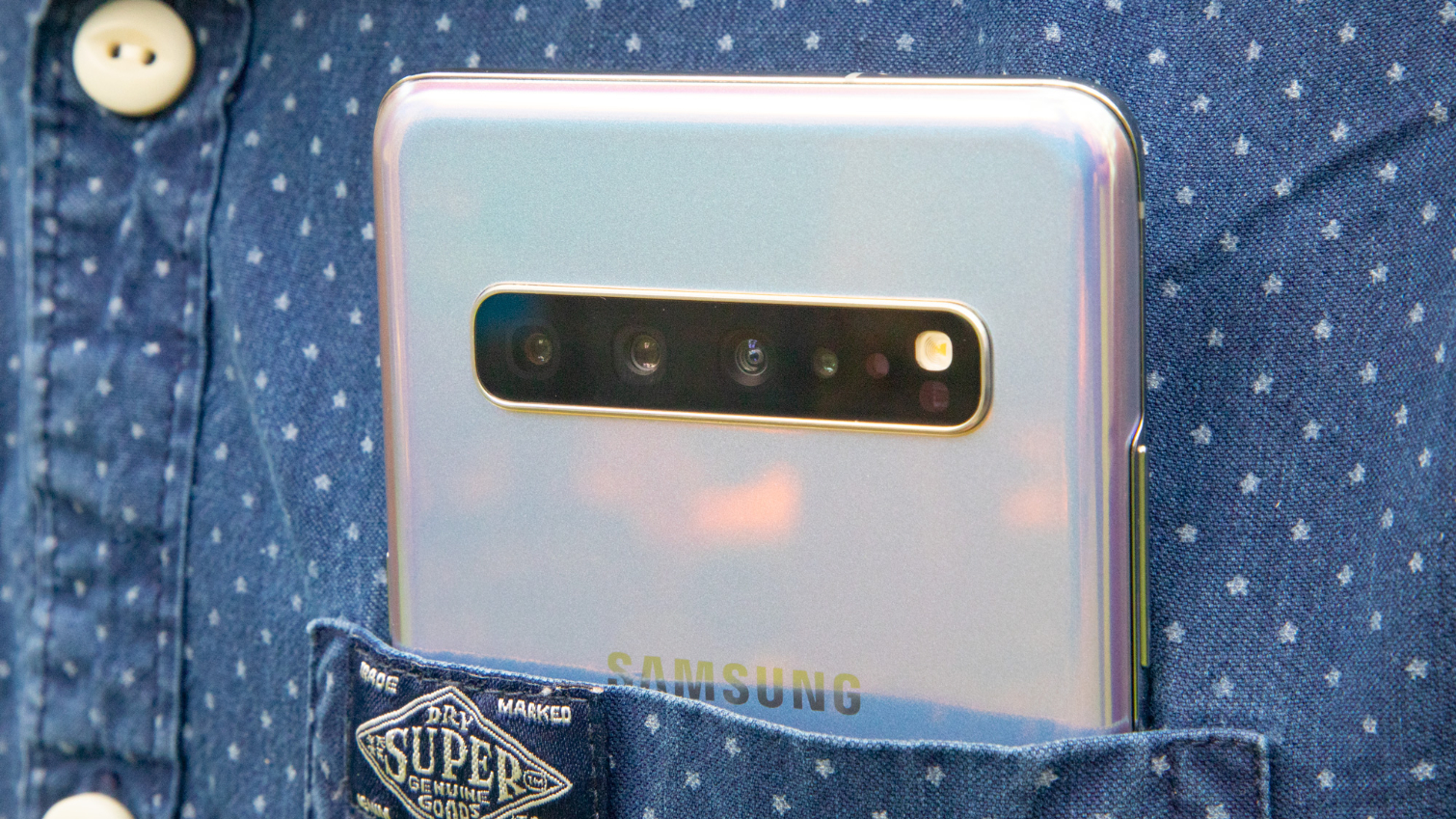
Time-of-flight technology records the amount of time it takes a laser pulse to bounce off an object. That allows the phone to calculate depth more accurately than devices that incorporate a more conventional dual-lens system, which relies on a difference of perspectives to ascertain a three-dimensional understanding of the scene. The S10 5G has two ToF sensors — one on the back and another on the front — allowing for bokeh-effect portraits with more precise separation between the foreground and background.
You can begin to see the benefit ToF offers in the above comparison between portraits captured with the S10 5G and the single-lens Pixel 3. Google’s handset includes some strands of the subject’s hair in the background, thereby blurring out detail that should be preserved. The S10 5G doesn’t suffer from this issue. Additionally, Samsung’s wide-aperture lens and software tuning help illuminate more of the frame, compared to the Pixel 3’s underexposed attempt.
As for the ToF camera mounted on the front, it’s clear that selfies taken with the S10 5G are significantly improved by that groundbreaking new sensor, which the S10 Plus lacks. Looking at the shot from the S10 Plus, the sides of my face and ears get increasingly blurrier the closer you get to the edge of the foreground. Again, this isn’t the case with the S10 5G’s attempt. In all other respects, however, the selfies are quite similar — hardly surprising, given that the primary front-facing lens in both variants is the same.
The main 12-MP, dual-aperture camera on the back of the S10 5G can take phenomenal photos on its own, as well. Although I like the Pixel 3’s rendition of this tranquil scene at a Pennsylvania state park, the detail in the shadows is sorely lacking from Google’s handset. The S10 5G illuminates all the leaves and vegetation shrouded in darkness. The effect is a bit unnatural — you could reasonably argue that Samsung’s Scene Optimizer is balancing out the contrast in a way our eyes might not — though the sharpness as you zoom in anywhere in the frame is astounding.
Transitioning to an image of a flower captured at dusk, the S10 5G delivers a crispness, particularly in the texture of the petals and at the center of the flower, that the Pixel 3 can’t quite grasp. However, the Pixel 3’s less saturated rendition is the more realistic one; the pink isn’t quite as intense, and the progressively lighter shades as you approach the edges of the petals are easier to discern.
Thanks to Samsung’s new Night Mode — a feature introduced in the other Galaxy S10 models — the S10 5G delivers some of the best low-light photography we’ve ever seen. Our photo studio was nearly pitch dark, and Samsung’s flagship still found enough light around the shadows to produce a result that you would have never believed was taken in those conditions. That said, the shot from the Huawei P30 Pro (also taken using Huawei’s version of Night Mode) is a bit clearer — so clear, in fact, you can even read some of the text on the globe.
Last but certainly not least is the S10 5G’s ultra-wide angle camera, which captured a pleasing (though slightly warm) landscape shot from the corner of New York’s Bryant Park. The P30 Pro, which also offers a wide field-of-view, doesn’t provide quite as pulled-out a perspective — though on the flip side, the Huawei manages to avoid the distortion that plagues the fringes of the shot from the Samsung phone. The P30 Pro also beats the S10 5G in terms of sharpness once again.
5G Testing: Phenomenal speed, with setbacks
The first true 5G phone you could buy in the U.S. (unless you count the Moto Z3 or Moto Z4 combined with an attachable 5G Moto Mod), the S10 5G is built to take advantage of millimeter-wave (mmWave) 5G networks, like those that Verizon and AT&T have up and running in some parts of the country. Verizon had first dibs on the phone, though now it's available at every major carrier in some form or another.
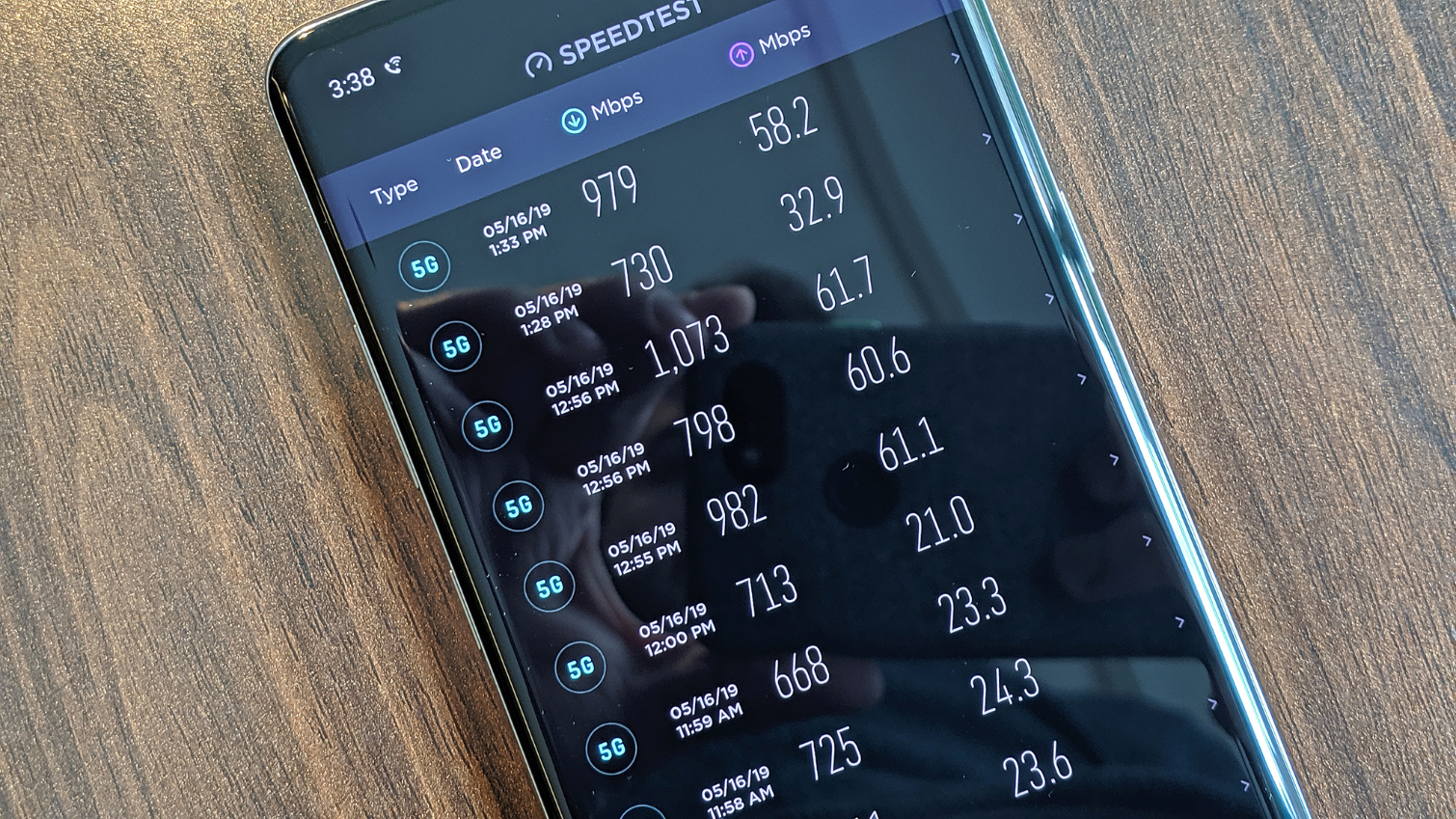
The caveat there is the mmWave part. 5G isn’t one technology, so to speak; it really stands for different protocols, which are being launched under one umbrella. So while the S10 5G is capable of attaining speeds in excess of 1Gbps via an mmWave small cell — like what you might see affixed to a traffic post in a major city, for example — the first-generation 5G modem inside the S10 5G cannot take advantage of the low-band, 600MHz FDD (frequency division duplex) 5G service that T-Mobile is leading its launch with, and that Verizon and AT&T are deploying in the future.
In simpler terms, the S10 5G is not a device that is fully prepared for 5G’s arrival in all its forms. However, as we discovered while testing the phone’s performance on Verizon’s mmWave network in Chicago, it’s still capable of some astonishing speeds right now.
We averaged download speeds of 672 Mbps over 20 tests conducted at several different locations across Chicago’s River North and West Loop neighborhoods. Among those 20 tests, we achieved speeds greater than 1Gbps three times, with the best result of the day topping out at 1.08 Gbps. At the time we visited the Windy City, Verizon was still routing all upstream 5G traffic over LTE, so we can’t shed light on that half of the equation just yet.
With that kind of speed, we were able to download a 24-minute Netflix show at standard quality in just 5 seconds — a feat which took 5 minutes and 21 seconds on a regular old LTE Galaxy S10. PUBG Mobile needed just 2 minutes and 17 seconds to download over 5G, and the entire first season of Netflix’s Chilling Adventures of Sabrina — 11 hour-long episodes — took a staggering 1 minute and 1 second.
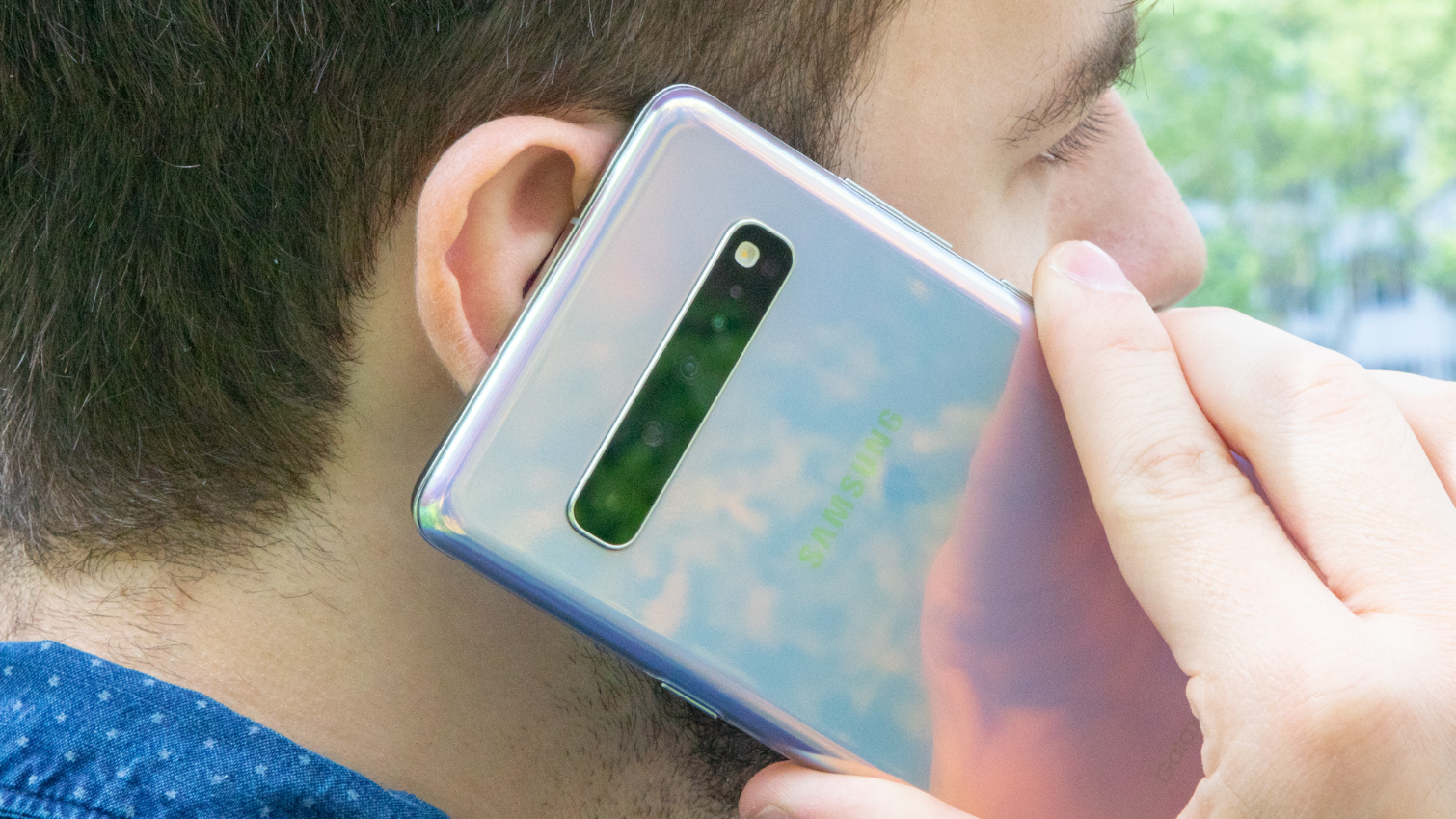
The results are tremendously exciting, even at this early stage in 5G’s existence. However, there are limitations. Millimeter-wave 5G requires a line of sight to the small cell equipment, with no physical obstructions. That also means you can’t connect to a mmWave 5G network indoors (unless, perhaps, you’re on the other side of a window where the cell is still in view). If anything gets between your phone and the source of the signal, you’ll either see a severe speed drop or lose the connection completely.
The S10 5G works, and in the right situation, it pulls real 5G speeds. But for all practical purposes, 5G is a hard sell right now.
Additionally, Verizon warns that if there are more than, say, five devices connected to the same node, performance may drop. And even if you take account of all these considerations, you still might not get the ideal connection. Our S10 5G fell back to LTE on more than one occasion, even when the small cell was clearly in view and 5G had been running perfectly just moments earlier.
Ultimately, you can put any skepticism to bed — the S10 5G works, and in the right situation, it pulls real 5G speeds. But for all practical purposes, 5G remains a hard sell right now. Until Verizon can both broaden its coverage map and pepper more of those 5G cities with a sufficient number of small cells, the X50 modem inside of your S10 5G isn’t going to have many opportunities to stretch its legs. And even after it does, it will soon be rendered obsolete by Qualcomm’s future 5G modems, which will be able to accommodate 5G in all its forms, across all carriers.
Performance: Same old Galaxy-fast
Strangely, the S10 5G is actually a bit less powerful than the $1,599 Galaxy S10 Plus that features 12GB of RAM and 1TB of internal storage.
That said, the S10 5G is no slouch. With Qualcomm’s latest Snapdragon 855 system-on-chip (international models get Exynos power) and 8GB of RAM, the S10 5G ranks among the fastest Android phones on the market today, even if it can’t quite steal the top spot.
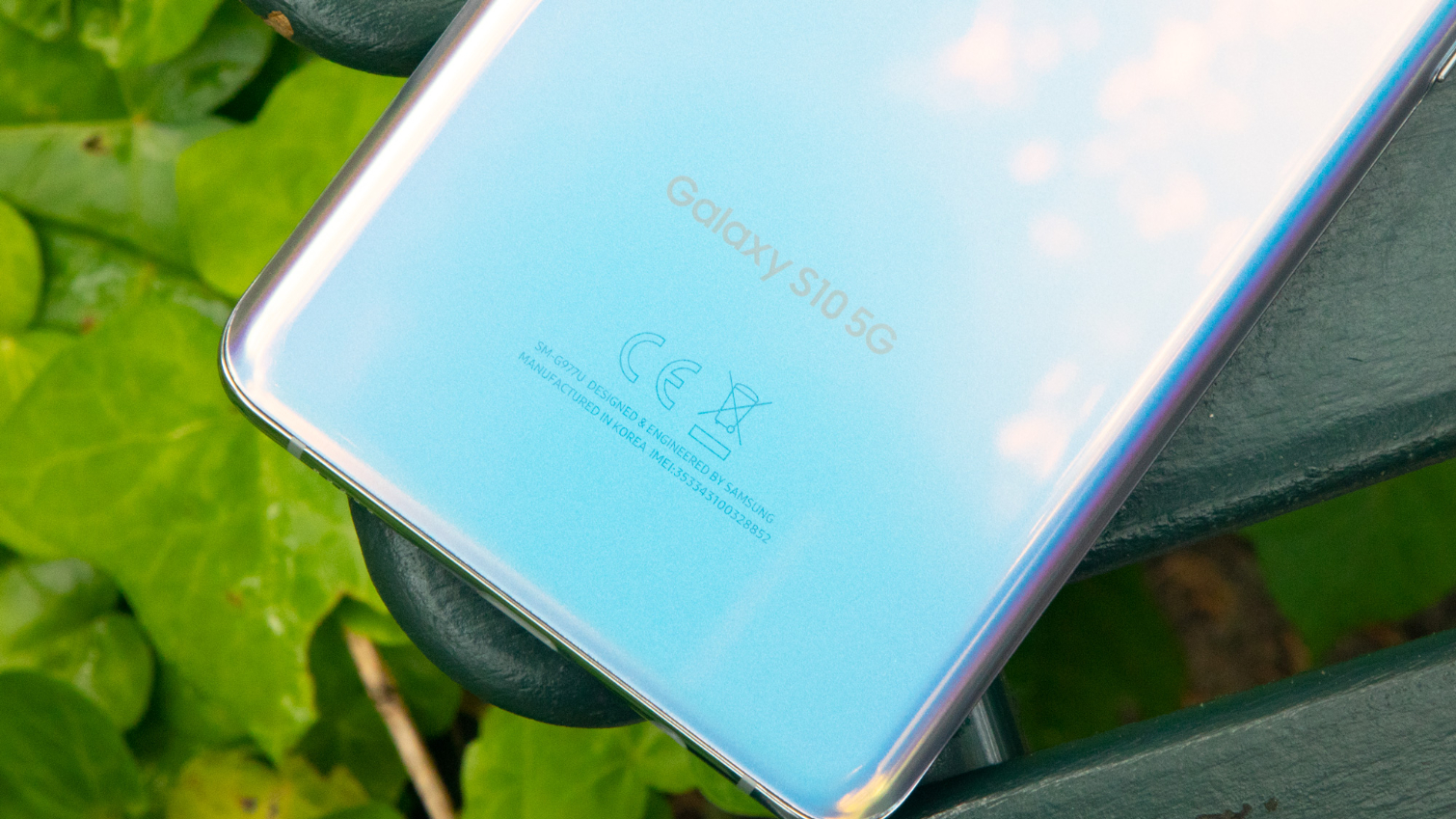
Amidst a barrage of concurrent 5G downloads, fast switching between apps, multitasking while listening to Spotify, and thumbing around Google Maps and multiple sessions of PUBG Mobile, the S10 5G proved it has the performance to keep pace with its superfast data speeds.
In Geekbench 4, a benchmark which measures overall performance, the S10 5G delivered a multi-core score of 10,684. That’s roughly the same as the 8GB RAM S10 Plus we tested a few months ago (10,732), but lags behind the LG G8 ThinQ (10,958), and is way off the current leader of the Android contingent — the range-topping, 12GB version of the OnePlus 7 Pro (11,227).
When it came time to test the S10 5G’s graphics rendering capabilities, the phone slotted in with a 5,563 result in 3DMark’s Sling Shot Extreme OpenGL ES 3.1 benchmark. The OnePlus 7 Pro was just a hair stronger here, at 5,587, while the iPhone XS Max only got as high as 4,339. Apple’s flagships remain unbeatable in terms of raw processing power, but are less capable with respect to polygon crunching.
Battery life: Surprisingly normal
Samsung has fitted the Galaxy S10 5G with a monster of a battery. Not only does it pack 4,500 mAh of juice, but it also lets the handset charge back up more quickly than any other Samsung phone, thanks to the new included 25-watt adapter.
Considering the phone’s massive 6.7-inch display and new-fangled radio, you might not expect Samsung’s first 5G handset to last particularly long on a charge. However, we were pleasantly surprised with the S10 5G’s longevity during our day of testing in Chicago. After two hours of countless gigabytes of app and video downloads, not to mention all that screen-on time, the device still had 59% of juice left in the tank. Not bad.

Back in New York, the S10 5G turned in 10 hours and 56 minutes of website streaming exclusively over LTE before shutting down. (While we would have liked to conduct a battery test over 5G, sitting on a street corner overnight wasn’t going to happen.) That’s a fair bit worse than the 12:35 we got from the S10 Plus, though again, that phone didn’t have a 5G radio siphoning its power.
Anyone who can recall the first wave of 4G LTE phones and their pitiful battery life will no doubt be relieved to know that the S10 5G should have no problem lasting throughout the day. That 11-hour result might not be quite as much as you’d expect from a phone with such a big battery, but given the unique situation here, we’d argue anything exceeding average longevity is a win for a 5G phone.
In terms of charging time, the S10 5G hit 30% after just 15 minutes connected to the packed-in adapter, and 56% after 30 minutes. As with other S10 models, Samsung has also included Wireless PowerShare, giving the phone the ability to wirelessly charge other devices that support Qi induction.
Software and special features
Like the rest of the Galaxy S10 family, the S10 5G runs Android Pie with Samsung’s new OneUI interface layered on top. OneUI is quite a comprehensive redesign of Android, and even represents a significant departure from the old Samsung Experience front-end that the Galaxy S9 launched with.

Icons and text are large and round, with most alerts and dialogs appearing at the bottom of the display so as to be reachable on devices with larger screens. And while that might not be particularly useful on diminutive handsets like the Galaxy S10e, it certainly comes in handy when using the gargantuan S10 Plus.
Ultimately, the same old rule about manufacturer Android skins applies here: Pixel devotees and purists will be annoyed, but most people should be happy with all of the extra functionality OneUI offers that goes beyond stock Android. We’re talking about features like secret folders, app duplication for multiple accounts, scrolling screenshots, true gesture controls that eliminate the thick navigation bar that typically lives at the bottom of the screen, and a Dark Mode that Samsung’s managed to deliver before Google unveiled its own as part of Android 10.
Bottom line
The Galaxy S10 5G may have been the first 5G phone on the market — others have since arrived — but it doesn’t feel like it. This is a surprisingly well-rounded handset that feels remarkably and refreshingly normal to use. You don’t have to put up with your typical early adopter qualms here — Samsung really did just take the Galaxy S10, already an excellent flagship smartphone, and gave it the gift of 5G (without crippling battery life, no less!)
But 5G carries with it a hefty price tag, and many deal-breaking caveats. They’re not entirely the fault of the phone, mind you, but rather have to do with the nature of 5G networks as they exist (or don’t) today. The technology is simply too new and too inaccessible to affect users right now. And even once 5G finally hits its stride, the S10 5G will still be ill-equipped to take advantage of the next-generation network in all its myriad forms.
You shouldn’t buy a 5G phone yet. But if you must buy one, the Galaxy S10 5G isn’t just your only option right now — it might just be the best we see all year.
Credit: Tom's Guide
Get instant access to breaking news, the hottest reviews, great deals and helpful tips.
Adam Ismail is a staff writer at Jalopnik and previously worked on Tom's Guide covering smartphones, car tech and gaming. His love for all things mobile began with the original Motorola Droid; since then he’s owned a variety of Android and iOS-powered handsets, refusing to stay loyal to one platform. His work has also appeared on Digital Trends and GTPlanet. When he’s not fiddling with the latest devices, he’s at an indie pop show, recording a podcast or playing Sega Dreamcast.
